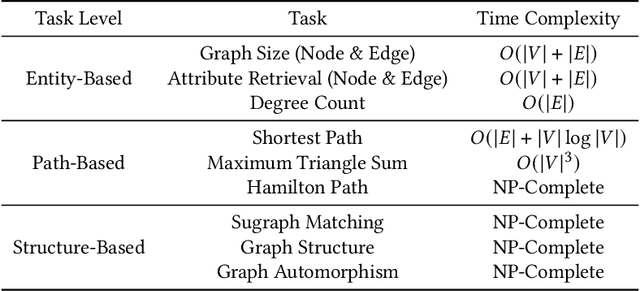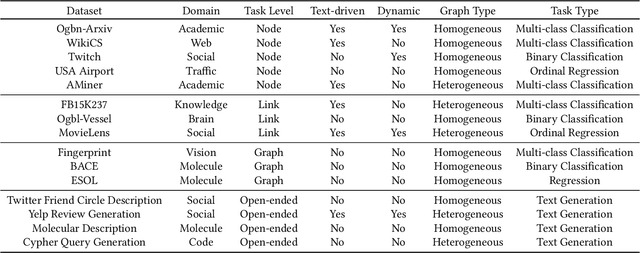Xiaozhong Liu
KEDRec-LM: A Knowledge-distilled Explainable Drug Recommendation Large Language Model
Feb 27, 2025Abstract:Drug discovery is a critical task in biomedical natural language processing (NLP), yet explainable drug discovery remains underexplored. Meanwhile, large language models (LLMs) have shown remarkable abilities in natural language understanding and generation. Leveraging LLMs for explainable drug discovery has the potential to improve downstream tasks and real-world applications. In this study, we utilize open-source drug knowledge graphs, clinical trial data, and PubMed publications to construct a comprehensive dataset for the explainable drug discovery task, named \textbf{expRxRec}. Furthermore, we introduce \textbf{KEDRec-LM}, an instruction-tuned LLM which distills knowledge from rich medical knowledge corpus for drug recommendation and rationale generation. To encourage further research in this area, we will publicly release\footnote{A copy is attached with this submission} both the dataset and KEDRec-LM.
Auto-Drafting Police Reports from Noisy ASR Outputs: A Trust-Centered LLM Approach
Feb 12, 2025Abstract:Achieving a delicate balance between fostering trust in law en- forcement and protecting the rights of both officers and civilians continues to emerge as a pressing research and product challenge in the world today. In the pursuit of fairness and transparency, this study presents an innovative AI-driven system designed to generate police report drafts from complex, noisy, and multi-role dialogue data. Our approach intelligently extracts key elements of law enforcement interactions and includes them in the draft, producing structured narratives that are not only high in quality but also reinforce accountability and procedural clarity. This frame- work holds the potential to transform the reporting process, ensur- ing greater oversight, consistency, and fairness in future policing practices. A demonstration video of our system can be accessed at https://drive.google.com/file/d/1kBrsGGR8e3B5xPSblrchRGj-Y-kpCHNO/view?usp=sharing
Intelligent Legal Assistant: An Interactive Clarification System for Legal Question Answering
Feb 11, 2025Abstract:The rise of large language models has opened new avenues for users seeking legal advice. However, users often lack professional legal knowledge, which can lead to questions that omit critical information. This deficiency makes it challenging for traditional legal question-answering systems to accurately identify users' actual needs, often resulting in imprecise or generalized advice. In this work, we develop a legal question-answering system called Intelligent Legal Assistant, which interacts with users to precisely capture their needs. When a user poses a question, the system requests that the user select their geographical location to pinpoint the applicable laws. It then generates clarifying questions and options based on the key information missing from the user's initial question. This allows the user to select and provide the necessary details. Once all necessary information is provided, the system produces an in-depth legal analysis encompassing three aspects: overall conclusion, jurisprudential analysis, and resolution suggestions.
Elevating Legal LLM Responses: Harnessing Trainable Logical Structures and Semantic Knowledge with Legal Reasoning
Feb 11, 2025Abstract:Large Language Models (LLMs) have achieved impressive results across numerous domains, yet they experience notable deficiencies in legal question-answering tasks. LLMs often generate generalized responses that lack the logical specificity required for expert legal advice and are prone to hallucination, providing answers that appear correct but are unreliable. Retrieval-Augmented Generation (RAG) techniques offer partial solutions to address this challenge, but existing approaches typically focus only on semantic similarity, neglecting the logical structure essential to legal reasoning. In this paper, we propose the Logical-Semantic Integration Model (LSIM), a novel supervised framework that bridges semantic and logical coherence. LSIM comprises three components: reinforcement learning predicts a structured fact-rule chain for each question, a trainable Deep Structured Semantic Model (DSSM) retrieves the most relevant candidate questions by integrating semantic and logical features, and in-context learning generates the final answer using the retrieved content. Our experiments on a real-world legal QA dataset-validated through both automated metrics and human evaluation-demonstrate that LSIM significantly enhances accuracy and reliability compared to existing methods.
Topic-FlipRAG: Topic-Orientated Adversarial Opinion Manipulation Attacks to Retrieval-Augmented Generation Models
Feb 03, 2025Abstract:Retrieval-Augmented Generation (RAG) systems based on Large Language Models (LLMs) have become essential for tasks such as question answering and content generation. However, their increasing impact on public opinion and information dissemination has made them a critical focus for security research due to inherent vulnerabilities. Previous studies have predominantly addressed attacks targeting factual or single-query manipulations. In this paper, we address a more practical scenario: topic-oriented adversarial opinion manipulation attacks on RAG models, where LLMs are required to reason and synthesize multiple perspectives, rendering them particularly susceptible to systematic knowledge poisoning. Specifically, we propose Topic-FlipRAG, a two-stage manipulation attack pipeline that strategically crafts adversarial perturbations to influence opinions across related queries. This approach combines traditional adversarial ranking attack techniques and leverages the extensive internal relevant knowledge and reasoning capabilities of LLMs to execute semantic-level perturbations. Experiments show that the proposed attacks effectively shift the opinion of the model's outputs on specific topics, significantly impacting user information perception. Current mitigation methods cannot effectively defend against such attacks, highlighting the necessity for enhanced safeguards for RAG systems, and offering crucial insights for LLM security research.
MEXA-CTP: Mode Experts Cross-Attention for Clinical Trial Outcome Prediction
Jan 12, 2025Abstract:Clinical trials are the gold standard for assessing the effectiveness and safety of drugs for treating diseases. Given the vast design space of drug molecules, elevated financial cost, and multi-year timeline of these trials, research on clinical trial outcome prediction has gained immense traction. Accurate predictions must leverage data of diverse modes such as drug molecules, target diseases, and eligibility criteria to infer successes and failures. Previous Deep Learning approaches for this task, such as HINT, often require wet lab data from synthesized molecules and/or rely on prior knowledge to encode interactions as part of the model architecture. To address these limitations, we propose a light-weight attention-based model, MEXA-CTP, to integrate readily-available multi-modal data and generate effective representations via specialized modules dubbed "mode experts", while avoiding human biases in model design. We optimize MEXA-CTP with the Cauchy loss to capture relevant interactions across modes. Our experiments on the Trial Outcome Prediction (TOP) benchmark demonstrate that MEXA-CTP improves upon existing approaches by, respectively, up to 11.3% in F1 score, 12.2% in PR-AUC, and 2.5% in ROC-AUC, compared to HINT. Ablation studies are provided to quantify the effectiveness of each component in our proposed method.
FlipedRAG: Black-Box Opinion Manipulation Attacks to Retrieval-Augmented Generation of Large Language Models
Jan 06, 2025Abstract:Retrieval-Augmented Generation (RAG) addresses hallucination and real-time constraints by dynamically retrieving relevant information from a knowledge database to supplement the LLMs' input. When presented with a query, RAG selects the most semantically similar texts from its knowledge bases and uses them as context for the LLMs to generate more accurate responses. RAG also creates a new attack surface, especially since RAG databases are frequently sourced from public domains. While existing studies have predominantly focused on optimizing RAG's performance and efficiency, emerging research has begun addressing the security concerns associated with RAG. However, these works have some limitations, typically focusing on either white-box methodologies or heuristic-based black-box attacks. Furthermore, prior research has mainly targeted simple factoid question answering, which is neither practically challenging nor resistant to correction. In this paper, we unveil a more realistic and threatening scenario: opinion manipulation for controversial topics against RAG. Particularly, we propose a novel RAG black-box attack method, termed FlipedRAG, which is transfer-based. By leveraging instruction engineering, we obtain partial retrieval model outputs from black-box RAG system, facilitating the training of surrogate models to enhance the effectiveness of opinion manipulation attack. Extensive experimental results confirms that our approach significantly enhances the average success rate of opinion manipulation by 16.7%. It achieves an average of a 50% directional change in the opinion polarity of RAG responses across four themes. Additionally, it induces a 20% shift in user cognition. Furthermore, we discuss the efficacy of potential defense mechanisms and conclude that they are insufficient in mitigating this type of attack, highlighting the urgent need to develop novel defensive strategies.
ROSE: A Reward-Oriented Data Selection Framework for LLM Task-Specific Instruction Tuning
Dec 01, 2024



Abstract:Instruction tuning has underscored the significant potential of large language models (LLMs) in producing more human-controllable and effective outputs in various domains. In this work, we focus on the data selection problem for task-specific instruction tuning of LLMs. Prevailing methods primarily rely on the crafted similarity metrics to select training data that aligns with the test data distribution. The goal is to minimize instruction tuning loss on the test data, ultimately improving performance on the target task. However, it has been widely observed that instruction tuning loss (i.e., cross-entropy loss for next token prediction) in LLMs often fails to exhibit a monotonic relationship with actual task performance. This misalignment undermines the effectiveness of current data selection methods for task-specific instruction tuning. To address this issue, we introduce ROSE, a novel Reward-Oriented inStruction data sElection method which leverages pairwise preference loss as a reward signal to optimize data selection for task-specific instruction tuning. Specifically, ROSE adapts an influence formulation to approximate the influence of training data points relative to a few-shot preference validation set to select the most task-related training data points. Experimental results show that by selecting just 5% of the training data using ROSE, our approach can achieve competitive results compared to fine-tuning with the full training dataset, and it surpasses other state-of-the-art data selection methods for task-specific instruction tuning. Our qualitative analysis further confirms the robust generalizability of our method across multiple benchmark datasets and diverse model architectures.
Science Out of Its Ivory Tower: Improving Accessibility with Reinforcement Learning
Oct 22, 2024Abstract:A vast amount of scholarly work is published daily, yet much of it remains inaccessible to the general public due to dense jargon and complex language. To address this challenge in science communication, we introduce a reinforcement learning framework that fine-tunes a language model to rewrite scholarly abstracts into more comprehensible versions. Guided by a carefully balanced combination of word- and sentence-level accessibility rewards, our language model effectively substitutes technical terms with more accessible alternatives, a task which models supervised fine-tuned or guided by conventional readability measures struggle to accomplish. Our best model adjusts the readability level of scholarly abstracts by approximately six U.S. grade levels -- in other words, from a postgraduate to a high school level. This translates to roughly a 90% relative boost over the supervised fine-tuning baseline, all while maintaining factual accuracy and high-quality language. An in-depth analysis of our approach shows that balanced rewards lead to systematic modifications in the base model, likely contributing to smoother optimization and superior performance. We envision this work as a step toward bridging the gap between scholarly research and the general public, particularly younger readers and those without a college degree.
LangGFM: A Large Language Model Alone Can be a Powerful Graph Foundation Model
Oct 19, 2024



Abstract:Graph foundation models (GFMs) have recently gained significant attention. However, the unique data processing and evaluation setups employed by different studies hinder a deeper understanding of their progress. Additionally, current research tends to focus on specific subsets of graph learning tasks, such as structural tasks, node-level tasks, or classification tasks. As a result, they often incorporate specialized modules tailored to particular task types, losing their applicability to other graph learning tasks and contradicting the original intent of foundation models to be universal. Therefore, to enhance consistency, coverage, and diversity across domains, tasks, and research interests within the graph learning community in the evaluation of GFMs, we propose GFMBench-a systematic and comprehensive benchmark comprising 26 datasets. Moreover, we introduce LangGFM, a novel GFM that relies entirely on large language models. By revisiting and exploring the effective graph textualization principles, as well as repurposing successful techniques from graph augmentation and graph self-supervised learning within the language space, LangGFM achieves performance on par with or exceeding the state of the art across GFMBench, which can offer us new perspectives, experiences, and baselines to drive forward the evolution of GFMs.
 Add to Chrome
Add to Chrome Add to Firefox
Add to Firefox Add to Edge
Add to Edge